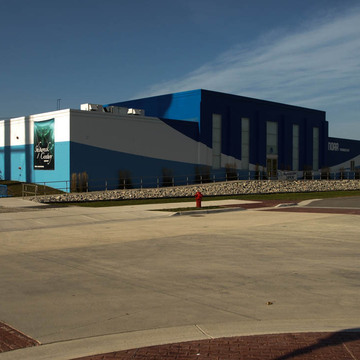Located at the mouth of the Thunder Bay River on the former Fletcher Paper Company mill site established in 1898, the Fletcher Paper Company coating plant (1963) was adapted and renovated to serve as the Great Lakes Maritime Heritage Center. The adaptive reuse of the site and its buildings was begun in 2008 with plans for a hotel, conference center, residential condominiums, museum, marine sanctuary, and shops. The anchor and initiating project of this redevelopment is the Great Lakes Maritime Heritage Center.
In 2002, having learned that the National Oceanic and Atmospheric Administration (NOAA) wanted to build a visitor center in Alpena, Alpena Marc, Inc., initiated acquisition of the Fletcher paper mill property and offered the agency space in the rehabilitated paper mill. NOAA signed a twenty-year lease for twenty thousand square feet in the paper company coating plant, space ten times the square footage it then occupied in the federal building. Dennis Schultz of Timm Construction built the center to LEED standards, certified in 2008 at the gold level.
The center is headquarters for the Thunder Bay National Marine Sanctuary, designated in 2000 as part of National Marine Sanctuary Program in the Great Lakes. Thunder Bay is a 448-square-mile marine sanctuary and underwater preserve established to protect some two hundred historically significant shipwrecks ranging from nineteenth-century wooden side-wheelers to twentieth-century steel-hull steamers. It is the thirteenth national marine sanctuary and only the second to focus solely on the protection of historic shipwrecks. The first is the Monitor National Marine Sanctuary, thirteen nautical miles off Cape Hatteras, North Carolina, to protect the wreck of the Civil War ironclad USS Monitor.
Within the center's dramatic blue and white walls, sweepingly painted the colors of NOAA, are an auditorium and spaces for an archaeological conservation lab and artifact storage, education, research, administration, and exhibits on the Great Lakes, shipwrecks, archaeology, and maritime history.
The concrete-block rail freight house built on the mill property in the 1920s now houses Fletcher Street Brewing Company. A boardwalk runs along the river from N. 2nd to N. 9th avenues.















